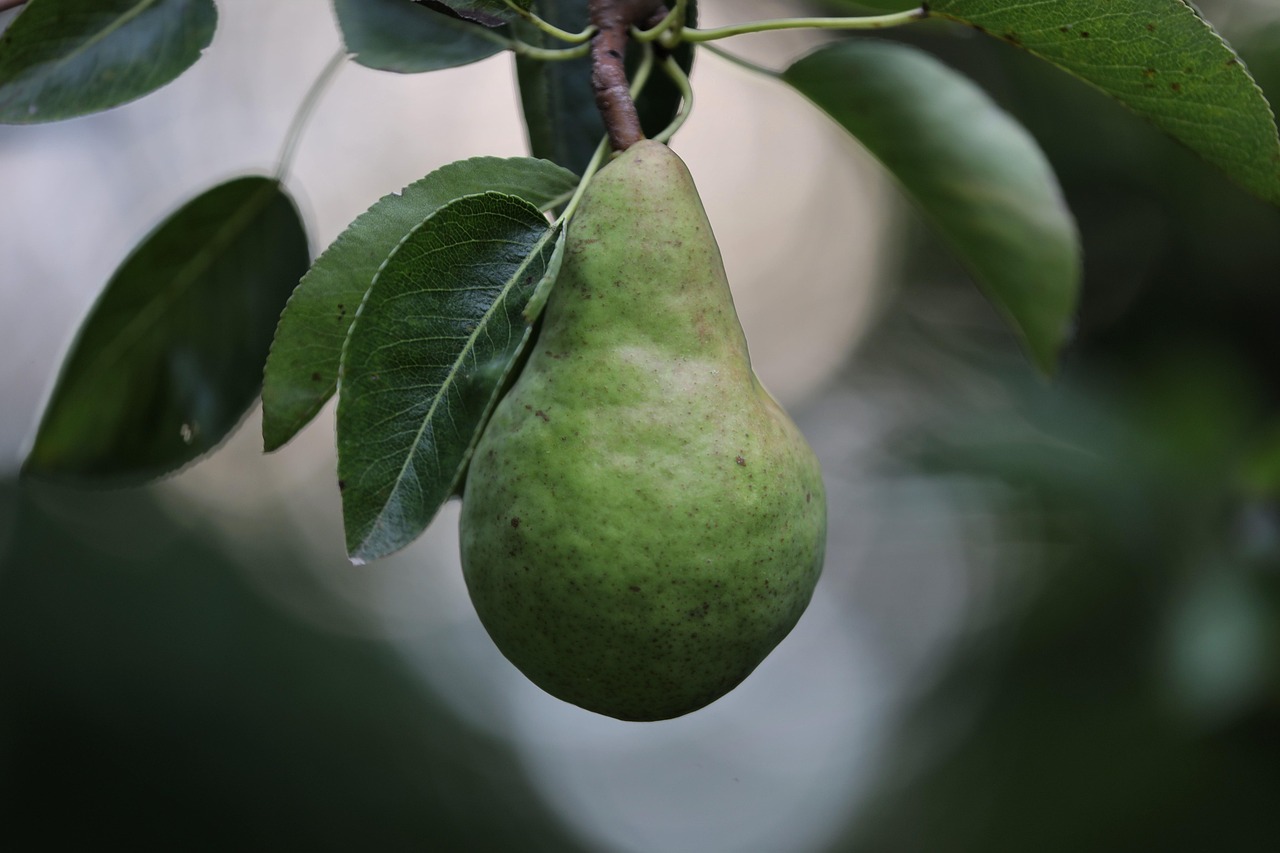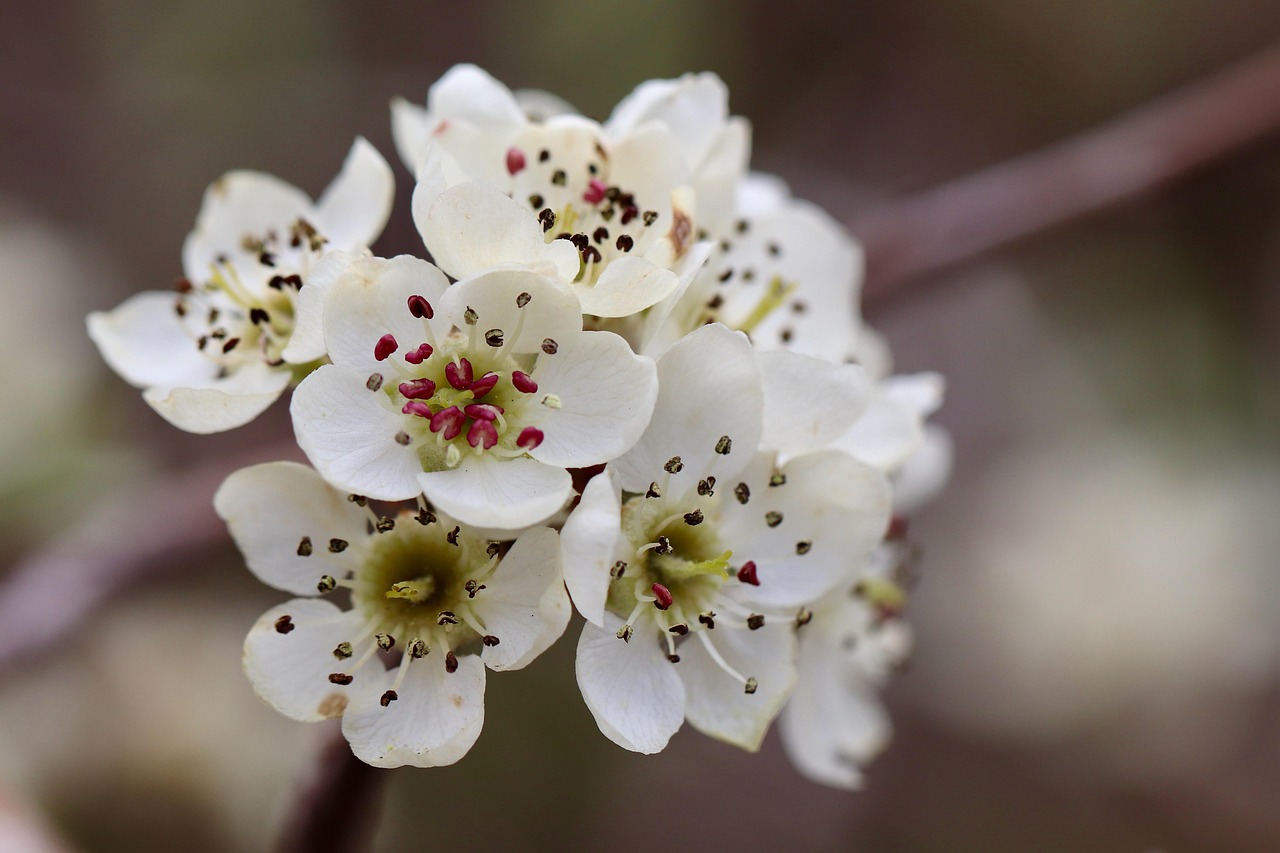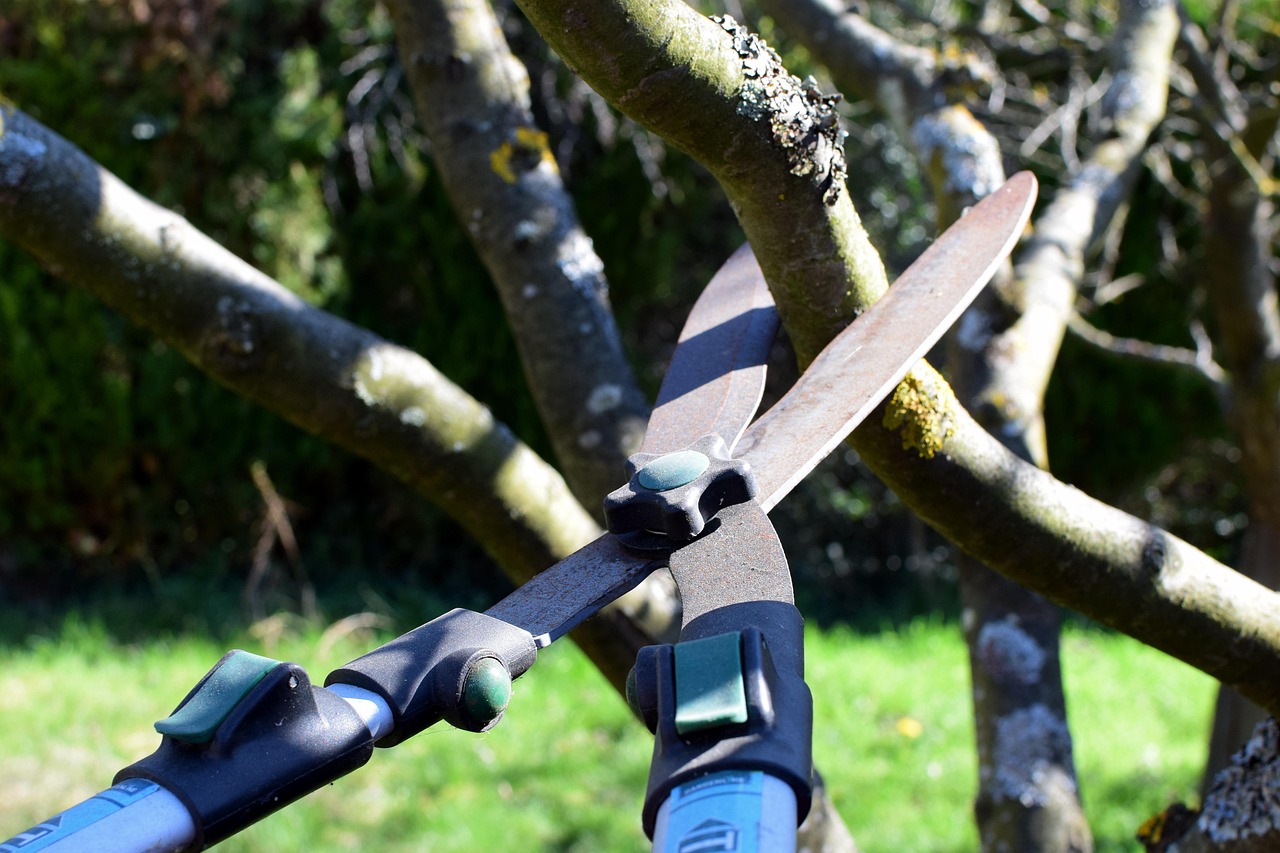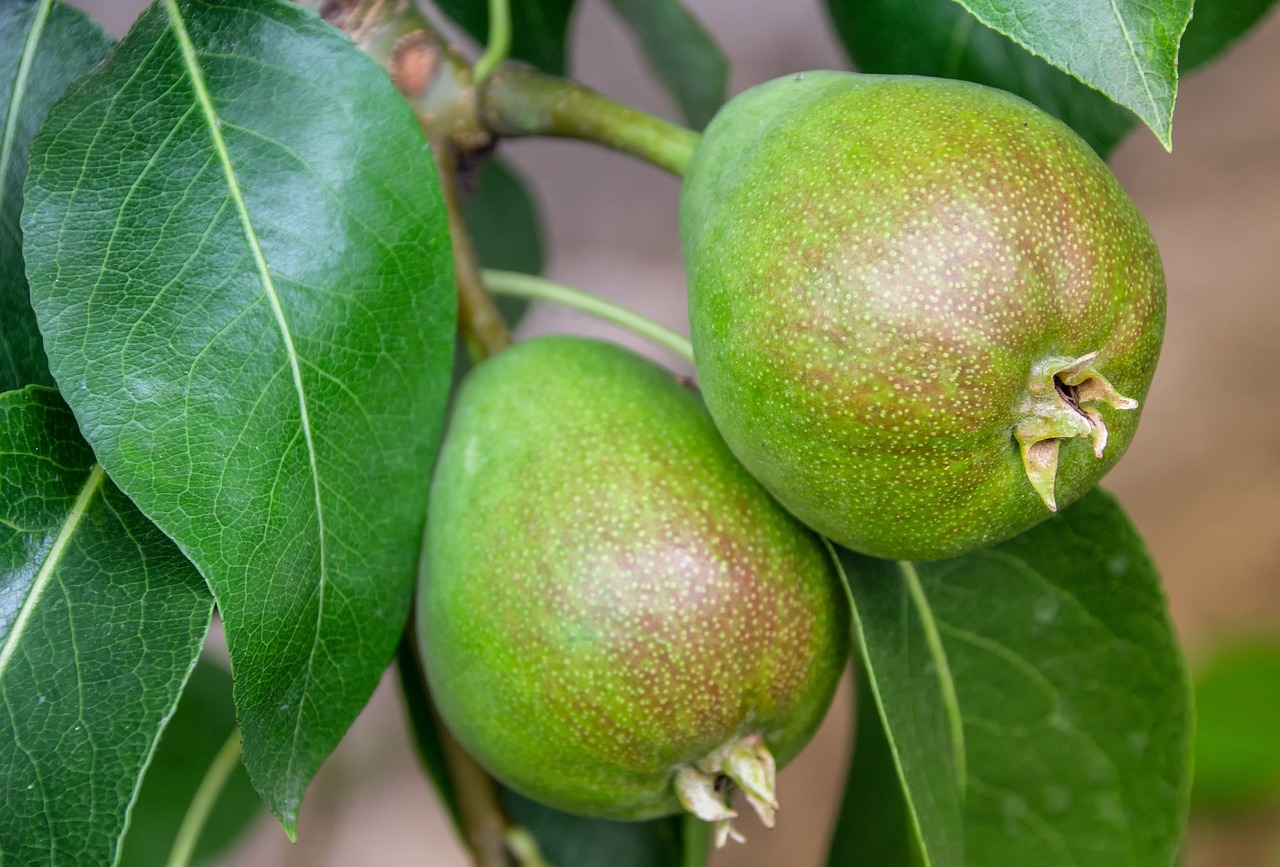Pear tree pruning in community gardens is essential for maintaining tree health, enhancing fruit production, and ensuring a safe growing environment. Proper techniques promote strong growth and improve air circulation, reducing disease risk.
Pear trees are a popular choice for community gardens due to their delicious fruit and beautiful blossoms. However, like all fruit trees, they require regular maintenance to thrive. Pruning is a crucial task that helps shape the tree, encourages fruiting, and prevents overcrowding. Understanding the best practices for pruning pear trees can significantly impact their health and productivity.

Pruning pear trees involves removing specific branches and foliage at strategic times throughout the year. This process helps the tree focus its energy on producing fruit rather than unnecessary growth. It also allows for better sunlight penetration and air circulation, which are vital for preventing diseases and fostering healthy growth.
Understanding the Importance of Pruning
Pruning serves several important purposes for pear trees in community gardens:
- Health Maintenance: Removing dead or diseased branches prevents the spread of illness.
- Improved Fruit Quality: Proper pruning encourages larger and tastier fruit by allowing more sunlight to reach the remaining branches.
- Structural Integrity: Pruning helps develop a strong framework that can support the weight of fruit.
- Enhanced Airflow: Better airflow reduces humidity around the tree, lowering the risk of fungal diseases.
In addition to these benefits, regular pruning can also enhance the aesthetic appeal of the garden. Well-maintained pear trees add beauty and charm to community spaces, encouraging more visitors and participants.

When to Prune Pear Trees
The timing of pruning is crucial for its effectiveness. Generally, the best time to prune pear trees is during their dormant season, which occurs in late winter or early spring before new growth starts. This timing minimizes stress on the tree and reduces the risk of frost damage to fresh cuts.
However, minor pruning can also be performed in summer to manage excessive growth. This technique, known as “summer pruning,” focuses on removing water sprouts and maintaining the desired shape of the tree.
Tools Needed for Pruning
Having the right tools is essential for effective pruning. Here are some basic tools needed for pruning pear trees:

- Pruning Shears: Ideal for cutting small branches and twigs.
- Loppers: Useful for thicker branches that are too large for shears.
- Saw: A handsaw or pruning saw is necessary for larger limbs.
- Gloves: Protects hands from cuts and prevents exposure to sap.
- Ladder: Helps reach higher branches safely.
Basic Pruning Techniques
Understanding basic pruning techniques will help ensure that your pear trees flourish. Here are some fundamental practices to follow:
- Remove Dead or Diseased Wood: Start by cutting away any dead or diseased branches at their base to promote healthy growth.
- Thin Out Crowded Branches: Identify branches that are crossing or overcrowding each other. Remove some to improve light access.
- Shorten Long Branches: Cut back excessively long branches to encourage bushier growth and more fruit production.
- Maintain a Central Leader: Ensure that one main trunk remains dominant for structural support.
Common Mistakes to Avoid
Avoiding common mistakes in pruning can make a significant difference in the health of your pear trees. Here are a few pitfalls to watch out for:
- Over-Pruning: Removing too much foliage can stress the tree and reduce fruit yield.
- Poor Timing: Pruning during active growth periods can lead to damage from frost or excessive sap loss.
- Neglecting Clean Tools: Always clean tools between cuts to prevent disease transfer between plants.
By following these guidelines, community gardeners can successfully prune pear trees, fostering a thriving environment conducive to growth and fruit production. Each step taken in this process contributes significantly to the overall health of the tree and, ultimately, the garden as a whole.

Seasonal Care and Maintenance
After pruning, ongoing care is essential for the health and productivity of pear trees. Seasonal maintenance helps ensure that the trees remain strong and fruitful throughout the year. Understanding the seasonal needs of pear trees will make a significant difference in their overall performance.
Spring Care
Spring is a critical time for pear trees as they awaken from dormancy. Here are some key tasks to complete during this season:
- Monitor Growth: After pruning, observe the new growth. This will help you identify any areas needing attention.
- Fertilization: Apply a balanced fertilizer to provide essential nutrients as the tree begins to grow. Use a fertilizer specifically formulated for fruit trees.
- Watering: Ensure the trees receive adequate water, particularly if rainfall is insufficient. Young trees need about one inch of water per week during this time.
Summer Care
Summer is the time when the tree is actively growing and fruiting. Proper care during this season is vital for maximizing fruit yield:
- Pest Control: Regularly inspect trees for signs of pests such as aphids or scale. Use organic insecticides or natural remedies to control infestations.
- Water Management: Continue monitoring soil moisture levels. Deep watering helps encourage root growth and fruit development.
- Thinning Fruit: If the tree sets too many fruits, thinning them out can improve the size and quality of the remaining pears. Aim for spacing them about 6 inches apart.
Fall Care
As autumn approaches, it’s essential to prepare pear trees for the winter months. Here are some fall care tips:
- Harvesting: Harvest pears when they are mature but not fully ripe. They should be firm and have a slight change in color.
- Clean Up: Remove fallen leaves and fruits from around the base of the tree to prevent disease and pest issues during dormancy.
- Mulching: Apply a layer of mulch around the base of the tree. This helps retain moisture and protects roots from temperature fluctuations.
Winter Care
Winter is a dormant period for pear trees, but some maintenance tasks are still necessary:
- Protection from Frost: In extremely cold areas, consider wrapping young trees in burlap or using tree guards to protect them from frost damage.
- Tool Maintenance: Clean and sharpen pruning tools during winter. This ensures they are ready for use when spring arrives.
- Planning for Spring: Review your pruning strategy and any adjustments needed based on the previous year’s growth.
Pest and Disease Management
Pear trees can be susceptible to various pests and diseases that can affect their health and productivity. Being proactive in managing these threats is essential for community gardens.
Common Pests
Several pests commonly affect pear trees, including:
- Aphids: Small insects that suck sap from leaves, causing curling and yellowing.
- Pear Psylla: A significant pest that can weaken trees and reduce fruit quality.
- Caterpillars: Larvae of moths that feed on leaves and can damage young fruit.
Disease Management
Pear trees are also prone to various diseases, such as:
- Fire Blight: A bacterial disease that causes branches to wilt and die suddenly. Prune infected areas immediately to prevent spread.
- Pear Scab: Fungal infection that leads to dark spots on leaves and fruit. Proper spacing and air circulation can help mitigate this disease.
- Crown Gall: A bacterial disease that causes galls on roots and stems. Ensure healthy planting practices to minimize risk.
Organic Remedies and Prevention
For those interested in organic gardening, several methods can be used to manage pests and diseases without synthetic chemicals:
- Neem Oil: A natural pesticide effective against various insects while being safe for beneficial insects when used correctly.
- Diatomaceous Earth: This powder can be sprinkled around the base of the tree to deter crawling insects.
- Copper Fungicide: An organic option for treating fungal diseases like pear scab when applied according to label instructions.
By actively managing seasonal care, pests, and diseases, community gardeners can provide an optimal environment for pear trees to thrive, ensuring bountiful harvests year after year.
Varieties of Pear Trees Suitable for Community Gardens
When selecting pear trees for community gardens, it is essential to choose varieties that are well-suited for your local climate, soil conditions, and intended use. Different pear varieties offer unique flavors, textures, and growth habits. Here are some popular varieties to consider:
European Pear Varieties
European pears are known for their smooth skin and sweet flavor. They are typically harvested when they are mature but still firm:
- Bartlett: A classic variety, Bartlett pears are juicy and sweet, excellent for fresh eating and canning.
- Bosc: Bosc pears have a distinctive elongated shape with a brownish skin and a spicy, aromatic flavor. They are great for baking.
- Comice: Comice pears are exceptionally sweet and juicy, often considered one of the best dessert pears.
Asian Pear Varieties
Asian pears have a crisp texture similar to apples and are typically round rather than elongated. They are popular for fresh consumption:
- Shinko: A reliable variety with a sweet flavor and crisp texture. Shinko pears are great for eating fresh or in salads.
- 20th Century (Nijisseiki): This variety has a mild, sweet flavor and is known for its crunchy texture. It is resistant to many diseases.
- Chojuro: Chojuro pears are known for their rich flavor and excellent storage capability, making them a favorite among gardeners.
Space Requirements and Tree Planting
Understanding the space requirements for pear trees is crucial for successful planting in community gardens. Proper spacing allows for healthy growth and easy access for maintenance.
Spacing Guidelines
Here are some general guidelines for spacing pear trees:
- Dwarf Varieties: Plant dwarf pear trees 4 to 6 feet apart. These smaller trees are suitable for limited spaces and can be trained to grow in smaller areas.
- Standard Varieties: Standard pear trees should be spaced 12 to 15 feet apart. This distance allows ample room for growth and airflow.
Planting Procedure
The proper planting procedure ensures that pear trees establish healthy roots and grow vigorously. Follow these steps for effective planting:
- Selecting the Right Location: Choose a sunny area with well-drained soil. Pear trees thrive in full sun with at least 6 hours of sunlight daily.
- Preparing the Soil: Test the soil pH before planting. Aim for a pH of 6.0 to 6.8. Amend the soil with organic matter if necessary.
- Digging the Hole: Dig a hole that is twice as wide as the root ball but no deeper than the root system. This encourages lateral root growth.
- Placing the Tree: Position the tree in the hole so that the graft union (swelling on the trunk) is above soil level. Fill in with soil and water well.
Training and Shaping Young Pear Trees
Training young pear trees is essential for promoting strong structure and optimal fruit production. The training process involves shaping the tree as it grows to ensure healthy development.
Young Tree Training Techniques
The following techniques can help shape young pear trees effectively:
- Centrally Leading System: Maintain a single main trunk that leads upward. Remove competing leaders to ensure one dominant leader grows straight.
- Lateral Branch Development: Encourage lateral branches to develop by selecting strong branches that form angles of about 45 degrees from the trunk.
- Regular Pruning: Regularly prune back new shoots to maintain shape and promote branching while avoiding over-pruning.
Support Structures
Younger trees may require support to prevent breakage from wind or heavy fruit loads. Consider using stakes or trellises as needed:
- Staking: Use a sturdy stake to support the tree until it establishes strong roots. Ensure that it does not constrict the tree’s growth.
- Trellising: For certain varieties, consider using a trellis system to train branches horizontally, which can improve light access and fruit production.
The Role of Pollination in Fruit Production
Pear trees generally require cross-pollination for optimal fruit set. Understanding pollination needs is vital when planting in community gardens.
Self-Pollinating vs. Cross-Pollinating Varieties
Some pear varieties can self-pollinate, while others need pollen from different varieties to produce fruit:
- Self-Pollinating Varieties: Some Asian pears, such as 20th Century, can produce fruit without needing another tree nearby.
- Cross-Pollinating Varieties: European varieties like Bartlett require pollen from another pear tree, such as Bosc, to fruit effectively.
When planting in community gardens, ensure that compatible varieties are planted within proximity to encourage successful pollination and maximize fruit production.
Harvesting Pears: Timing and Techniques
Harvesting pears at the right time is crucial for ensuring the best flavor and texture. Unlike many fruits, pears do not ripen on the tree, so they must be picked while still firm. Here are some important considerations for harvesting pears:
When to Harvest
Pears are typically ready for harvest in late summer to early fall, depending on the variety. Here are some indicators that pears are ready to be picked:
- Color Change: The skin color will change from green to a more yellow or golden hue, depending on the variety.
- Ease of Picking: Pears should come off the tree easily when twisted gently. If you have to pull hard, they are not yet ready.
- Seed Color: Check the seeds inside the pear. If they are brown, the fruit is ripe; if they are still white, it may need more time.
Harvesting Techniques
When harvesting pears, it is essential to handle them carefully to avoid bruising. Follow these techniques for effective harvesting:
- Use Clean Tools: Use clean pruning shears to cut the stem of the pear instead of pulling it off. This prevents damage to the fruit and tree.
- Handle with Care: Place harvested pears gently into baskets or containers to avoid bruising. Consider lining containers with soft material.
- Store Properly: Store pears in a cool, dark place to allow them to ripen properly after being picked. They will soften over time at room temperature.
Caring for Pear Trees in Community Spaces
Caring for pear trees in community gardens requires collaboration and shared responsibility among community members. Here are some best practices:
Community Involvement
Engaging community members in the care of pear trees can enhance the gardening experience. Some ways to involve the community include:
- Organizing Workshops: Host workshops on pruning, pest management, and harvesting techniques to educate community members.
- Shared Responsibilities: Assign specific tasks such as watering, weeding, and monitoring pests among volunteers to ensure ongoing care.
- Celebrating Harvest Days: Plan community events to celebrate the harvest season. This can foster camaraderie and enthusiasm for gardening.
Sustainability Practices
Sustainable practices are essential for maintaining healthy pear trees and a thriving garden ecosystem. Here are some suggestions:
- Composting: Create a compost system for organic waste, which can provide valuable nutrients for the trees.
- Water Conservation: Implement drip irrigation or rainwater collection systems to reduce water usage while keeping trees hydrated.
- Diverse Planting: Plant companion plants that can deter pests or attract beneficial insects, enriching biodiversity in the garden.
Final Thoughts
Pear tree pruning and care in community gardens offer numerous benefits, from enhancing fruit production to fostering community engagement. By understanding the specific needs of pear trees, gardeners can create a thriving environment that yields delicious fruit while promoting sustainability.
The importance of proper pruning techniques, seasonal care, pest management, and community involvement cannot be overstated. Each aspect contributes significantly to the health and productivity of pear trees, ensuring that community gardens flourish year after year.
As gardeners work together to cultivate these beautiful and fruitful trees, they not only contribute to their well-being but also strengthen community bonds. Whether through educational workshops or shared responsibilities, the joy of growing and harvesting pears can create lasting memories for all involved.
In conclusion, with the right knowledge and practices in place, community gardeners can successfully grow pear trees that provide not only nourishment but also a sense of achievement and connection within their communities.
